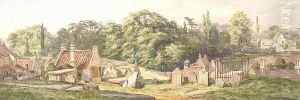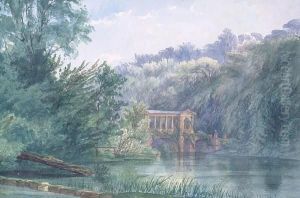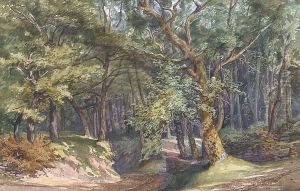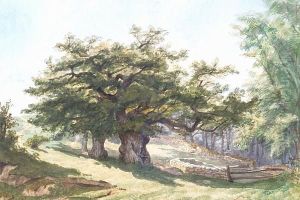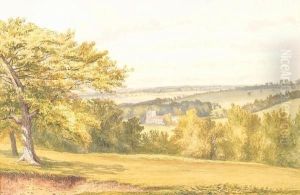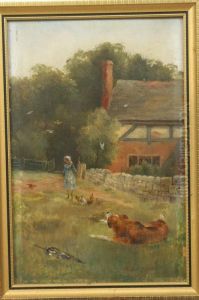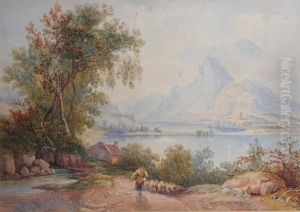Alfred John Keene Paintings
Alfred John Keene was an English watercolour artist born in Derby in 1864. He grew up in a period that saw the Victorian era's love for detailed and elaborate art give way to various emerging art movements. Keene's work, however, retained a strong attachment to the detailed and picturesque, characteristics that defined much of Victorian art. Despite the changing artistic landscapes of his time, Keene managed to carve out a niche for himself, primarily through his detailed watercolours that often depicted landscapes and urban scenes.
Keene's early life was steeped in the cultural milieu of Derby, a city known for its rich artistic heritage. This environment undoubtedly nurtured his developing talent. Though specific details about his early training are scant, it is evident that Keene honed his skills in watercolour, a medium known for its difficulty in terms of control and precision. He became adept at capturing the transient effects of light and atmosphere, a skill that would define his artistic oeuvre.
Throughout his career, Alfred John Keene participated in various exhibitions, showcasing his work alongside contemporaries who were also exploring the potentials of watercolour. His works were well-received, noted for their meticulous attention to detail and ability to evoke a sense of place and time. Keene's landscapes, in particular, were praised for their realism and atmospheric quality, capturing the British countryside's serene beauty.
Despite his talents and the recognition he received during his lifetime, Alfred John Keene did not achieve the same level of fame as some of his contemporaries. His dedication to watercolour, at a time when oil painting was considered a more prestigious medium, may have contributed to this. However, his works have continued to be appreciated by collectors and art enthusiasts, particularly those with an interest in the Victorian era and the traditional landscape genre.
Alfred John Keene passed away in 1930, leaving behind a body of work that, while perhaps not as widely known as that of some of his peers, offers a captivating glimpse into the landscapes and urban scenes of his time. His contributions to English watercolour painting remain an important, if somewhat overlooked, part of the country's artistic heritage.
